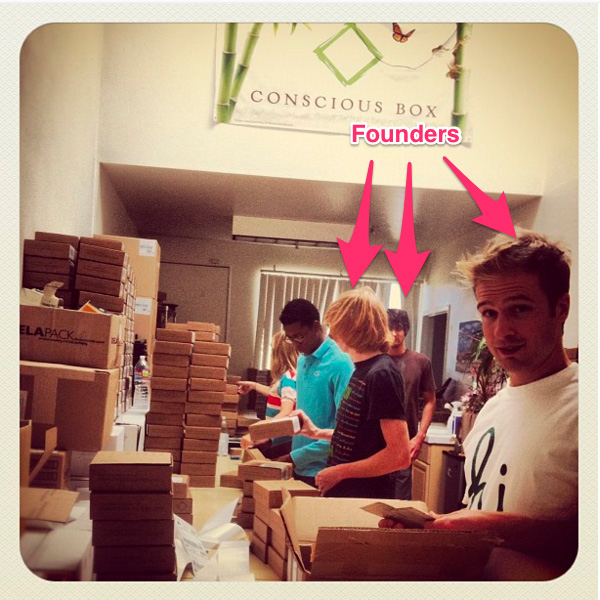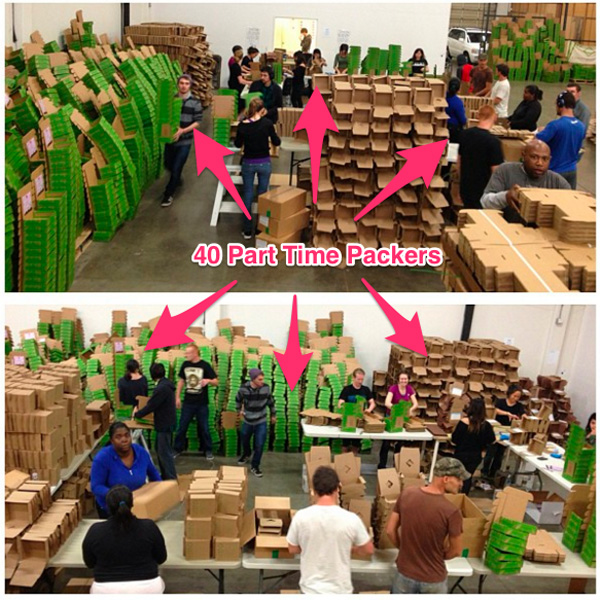As you know, the merits of subscription commerce are at the heart of this blog. It’s our goal here to explore strategies, case studies, and other realities that surround the e-commerce industry, specifically with a focus on recurring monthly product offerings (i.e., subscription boxes).
But while there are many perks of this model, we also need to examine the challenges of operating a subscription business. Like any business, subscription services have their drawbacks as well.
From tasks around early planning to challenges that come with scaling (i.e. growing) your business, here are some of the biggest things you need to watch out for when launching a subscription box. Specifically…
Pricing Your Subscription Box
Pricing is, in many ways, the Achilles heel of subscription boxes. In the pursuit to make everything as affordable as possible for their customers, many business owners don’t take the necessary time to accurately price their monthly box. This can occur for many reasons, such as:
- Not considering all the costs
- Comparing one’s idea to a close competitor, then adopting their pricing structure in order to compete
- Underestimating specific costs, like product sourcing or shipping
- Not providing enough “wiggle room” in your budget, in case you need to spend more occasionally
Tip: Check out Cratejoy’s pricing guide to estimate the price of your monthly box offering!
How to Overcome the Challenge
We suggest you bookmark Cratejoy’s subscription box calculator, which considers factors like COGS, fulfillment, CoCA, and customer LTV. This calculator simplifies a lot of the equations you’ll need, but should only be used as a rough tool. Remember that you should investigate your costs further to get an accurate sense of pricing.
Now, let’s look more closely at these missteps.
Not Considering All the Costs
There are a handful of costs that go into a subscription product, and they can be boiled down to a short equation.
COGS (Costs of Goods Sold) = Product Cost + Fulfillment Cost
Product costs include the cost of products included in the box; the cost of your box itself (in other words, its design and printing); and the cost of tissue paper, packing material, and any other inserts you include. Simple enough.
Fulfillment costs include the cost of packing the box and the cost to ship the box.
So, how do we determine gross profit?
If you have a box priced at $24.99 and your COGS = $18.99, you may feel comfortable with a $6 margin. But you’re skipping ahead if you stop there. Because you need to factor in CAC/CoCA –– the Customer Acquisition Cost –– and operational costs, you may have to increase your box price. Operational costs can include web hosting, apps, stock photos, customer service platform costs, advertising, and any other business-related expenses, such as accounting or hiring/paying employees.
These costs add up. When you don’t consider them, your profit margin could shrink to nothing –– or even require you to invest more cash.
Pricing with a Competitor in Mind
This is one of the easiest missteps to avoid in pricing. The fact of the matter is this: you should focus on building your own products before worrying about a competitor. A competitor’s pricing structure might be poorly built or factor in a competitive advantage you’re not aware of, leaving you with a competitively-priced product that’s potentially unsustainable… or even inferior.
The bottom line: forget your competitors!
Underestimating Costs
Using the calculator above, you may feel confident in your assumptions. But when you don’t take the time to confirm your assumptions –– by actually investing in product or shipping costs –– you leave yourself open to a nasty surprise later.
Reach out to several companies whose products you’re considering for your box. Ask them what kind of pricing they can offer for X-number of the item you’re interested in. See how easy or hard it is to negotiate with them on cost. Even if you don’t have an active subscription built up yet, you can get an accurate quote from a potential supplier.
For shipping, make sure you’ve chosen your box size and know your potential average weight (or cubic tier if using cubic shipping for subscription boxes). Shipping is based on zones, or shipping areas based on distances from the origin address. You can calculate shipping costs, or read more about cubic shipping, on the USPS website.
Not Allowing Enough Wiggle Room
Similar to the last point is providing yourself space within your margin of error. Basically, it’s wise to build in a buffer zone for costs. If you want to achieve an $8 margin on all your boxes, for example, consider pricing it to allow yourself a $10 margin. As a result, you open up the possibility to have higher-margin months, but also provide yourself with security in case one-month purchasing, shipping or other expenses arise.
Scaling an In-House Fulfillment Operation
In-house fulfillment starts out a challenge. But scaling it up is harder.
To get a sense of the growth of this operation, check out these two pictures. The first photo shows myself and the other founders of Conscious Box working the packing line for a few hundred boxes.

The next photo is 10,000s of subscribers later.

To say that getting from A to B was a “small feat” would be a huge understatement. It took thousands of hours, lots of effort, and there were many mistakes along the way. But it is possible for fulfillment to run smoothly, and in turn, save you profits and improve quality control.
How to Overcome the Challenge
While you might save money or have better control over the packing quality by doing fulfillment in-house, we encourage outsourcing if you can. Doing so lets you focus on growing your business rather than the pains of running it.
However, there are a few things you can do in-house to keep operations running smoothly.
Find the right people. Hire a warehouse manager to track products, quantity, expiration dates, and any other critical information. You’ll also need packing managers to head up each team of box packers. Because most subscription boxes have 5-10 items inside, you’re limited on how many people can pack at once, which means you should maintain separate “lines” of teams packing boxes. Packing managers keep these lines running efficiently.
Dedicate time to preparation. By pre-folding boxes, stocking bins with packing material, and keeping the packing area clean and free of obstacles, you greatly reduce hold-ups on the line.
Create a monthly calendar. Monthly calendars offer several advantages. They outline “drop” dates for when products must arrive, be counted, and be stored. They detail packing days and schedules, as well as the number of staff members needed for these shifts. Lastly, they hold you accountable to these dates and requirements, improving your chances of successful fulfillment that month.
Keep hands on deck. Having a team of floating packers who can clean a space, restock products, or jump into the line helps the process move efficiently.
Create dedicated workstations. Specific pre- and post-line stations –– for example, folding boxes or slapping on labels –– remove some steps from your actual packing time. Ideally, your packing line will never stop moving.
Remember, you may not need a warehouse team until you have thousands of subscribers. However, as you begin to scale up, make sure to prepare some of the resources you’ll need to keep your in-house team on task and on schedule.
Getting Used to a Monthly Schedule of Operations
One of the biggest challenges I see among new subscription business owners is simply acclimating to the rhythm of a monthly schedule of operations.
What exactly is the challenge here? Well, every month, you need to…
- Find and order products
- Create a packing list, have it printed, and have it delivered
- Manage shipping and fulfillment logistics, including ordering materials and organizing labor
- Manage re-billing customers, including determining exact cutoff dates/times and segmenting customers into specific, accurate windows
- Attend to customer service needs, including replacements, refunds, and other concerns
- Market your box service via social media promotion, email marketing, and other efforts
When you sit back and look, it can feel daunting, and that’s the source of the challenge: there’s a ton to do!
How to Overcome the Challenge
Create a calendar. Most of these operations don’t need to happen at the same time. However, marketing and customer service should happen throughout the month.
Week 1 can be dedicated to finding products, while Week 2 can focus on creating a packing list and placing an order. Later, Week 3 can be dedicated to getting operations and materials ready for packing. (Your packing list should arrive this week!) Week 4 is dedicated to packing/shipping and preparing for a peak in customer service attributed to shipping and rebilling.
Delegate. If you’ve got a business partner, split responsibilities based on your skill set. If you’ve got employees, make expectations, deliverables, and time requirements clear.
Set daily reminders. Make a point to keep yourself on task through the day. Set day-specific goals, and create alarms throughout your day for when they should be completed. Adjust deadlines based on early/late completions.
Execute one task at a time. Trying to create an email campaign, take customer service calls, and browse products all at the same time is never going to work. Multi-tasking key operations is just unwise for a deadline-driven business. Try to focus on one task at a time.
Maintaining Superb Customer Service
Subscription businesses live and die on their ability to serve subscribers. Unlike the product they’re willing to wait 3-4 weeks for each month, however, getting helpful and accurate customer support is something subscribers expect immediately.
And for good reason: subscribers are committing to an ongoing service that bills them on a set interval. To the same degree they commit (money and energy) to you, they’ll expect a strong commitment from you.
As a result, you should hold yourself to strong customer service standards. Some practical ways you can do this include…
Emailing received notifications. Always alert customers that you have received their email and will resolve their problem soon.
Replying on the same day. Keep response times under 24 hours during business days (Monday-Friday).
Offering exceptional support on your website. You should have both a comprehensive FAQ page as well as self-service options (for customers who need to change their address or cancel their subscription, for example).
Offering quick answers via social media. Customer service doesn’t stop at your email inbox. You need to have your team members focused on all your social media channels.
In order to accomplish these things, you should consider using a third-party customer service solution, which will provide extra tools and services to keep response times down. For example, the use of macros automatically fills in response emails, while filters and lists will sort emails based on topics and keywords.
Overcoming the Challenges of Operating a Subscription Box
While some of the planning and logistics around subscription boxes can provide unique challenges to scaling and operating your business, solutions aren’t far away. If you’re considering operating a subscription business, let us know which challenges (those listed here, or your own challenges) you think are most difficult in the comment section. If you currently operate a subscription business, tell us how you’ve managed these challenges, or which ones proved most difficult for you!
Cratejoy is an all in one subscription commerce platform that includes everything you need to start your own subscription commerce business online. Try it free for 14 days.






